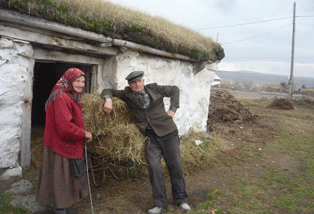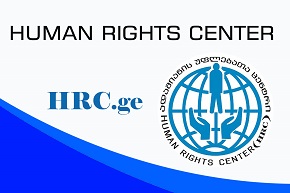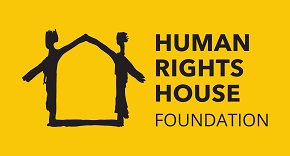Manon Bokuchava, Samtskhe-Javakheti
Gorelovka village in Ninotsminda district is weird for Georgian reality – one-floor white houses with blue and green windows looking at stork-nests on electricity-poles.
These are Doukhobors’ houses. In the 1980s, more than 2 000 families of Doukhobors lived in the village but their number is just 40 now.
Doukhobors, evicted by Tsarist Russia, resettled in Javakheti, Georgia in 1841. They refused to take military service in Tsarist Russia and according to their new religion they chose completely peaceful life. More precisely, they do not obey dogmas and rules adopted by clergymen. Doukhobors state that God is not in the church; it is in the heart of every person. They do not warship icons and do not have chapels; but on Sundays they prey in the Doukhobors’ museum located in Gorelvoka.
“We donate money to the museum. With this money we are renovating the building now,” Doukhobor women clarified and continued painting of the museum gate.
Eco-migrants from Adjara live in many houses of Doukhobors’ predecessors. First houses of Doukhobors now are used as cattle-sheds. First houses are those who were built a century ago, which Doukhobors built soon after arrival. The roofs of those houses are sandy; grasses grown on the roofs are already yellow but cows still climb roofs to eat grass. Horses and cows step there. Doukhobors explain that old houses are covered with lake sand because the sand full of sea-plants keeps warm in houses.
Locals do not complain about their problems. Instead, eco-migrants from Gorelovka explain that this part of society is restricted by local authority. They said the reason of Doukhobors’ migration is this oppression.
“Here we live normally. We work, cope with hard climate and we support each other,” Doukhobor Aleksandre Kalmakov shortly answered. Village tint Nikolai Sukhorkov showed us his house and garden. He has many plants and explains which of them treat different diseases.
Villagers tell a legend about Nikolai. Before Doom Day, first Doukhobor will return to the village who first left the village. They believe this person is Nikalai. He was first to leave Georgia several years ago but then he first returned back to Gorelovka.
“Everything will be all right. You should think so and it will be kind of a program for your future life and it will come true,” Nialai suggested.
Doukhobors’ houses are decorated with their handmade things. Each Doukhobor has -Embroidered towels, handmade traditional cloths. People wear traditional cloths only on holidays and on Sunday prayers. Doukhobors’ museum is a colorful building; flowers are painted on its door and windows. Birches are growing in the yard. There are embroidered towels and pillows inside the building. We saw similar chapel in Nikalai’s house.
Mostly old people live in Gorelovka. Young generation is growing up only in several families. They do not speak Georgian and most of them say that they intend to go to Russia. The reason is that they are restricted and other people are settled in their houses.
“You know problems of Adjarian eco-migrants here but local Doukhobors also need attention. Several days ago, my Doukhobor neighbor called me; he went to Russia for two weeks but his house and plot are about to assign to different people. I have a document from the civil registry which proves that the estate really belongs to Doukhobor Mikheil Miroshnikov but the process still goes on. We do not know whom to apply for help,” eco-migrant from Adjara Temur Beridze said.
They say Georgia is their homeland and centuries ago their predecessors survived in this country. Now, they are sorry that Gorelovka became an abandoned village of Doukhobors. People say, once this village surprised everybody with its beautiful houses, clean streets and beauty; now guests only see dirty streets and cattle-sheds in front of houses. They recall past time and say they have always had cattle in the village; warmed their houses with cattle excrements but they always kept environment clean and everybody cared for the beauty of their village.




